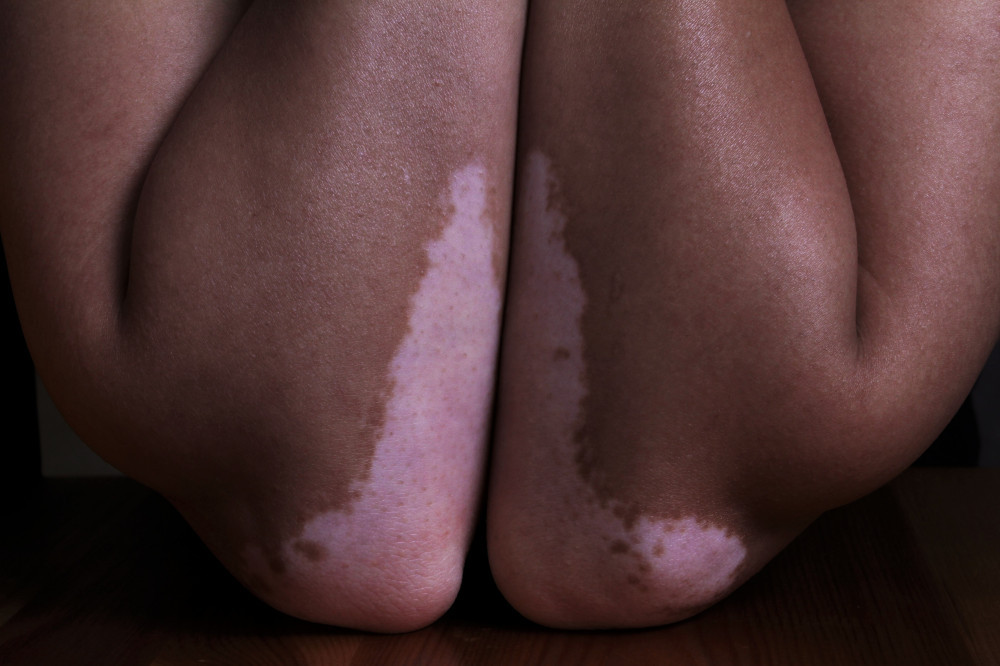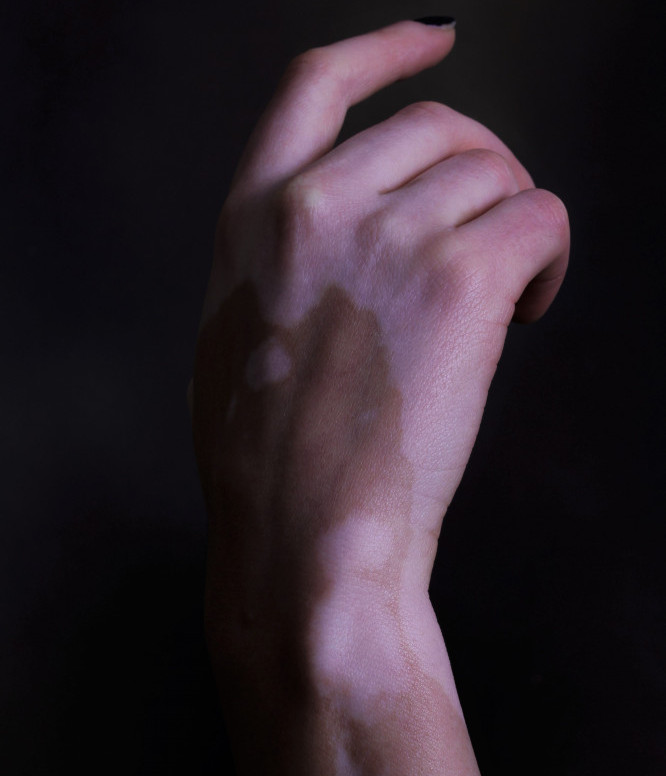“Beauty, Health and Wellness | Vitiligo Autoimmune FAQs” provides answers to 20 top questions people are asking. It is important to have a proper understanding.
Vitiligo is an autoimmune skin disorder presenting as loss of pigmentation. Hence, this irregularity occurs when the body mistakenly attacks and destroys its own cells. These cells, melanocytes, produce the pigment melanin.
Melanin is responsible for skin color. Therefore, this condition causes white or depigmented patches to develop in various areas of the body. The changes are distinct, especially in darker skin color.
In this article, we will explore the causes, symptoms, treatment options, and frequently asked questions about vitiligo.

Beauty, Health and Wellness | Vitiligo Definition
What is vitiligo? It is a long-term skin condition characterized by the appearance of depigmented or white patches on the skin. Subsequently, these patches occur because the immune system destroys melanin cells.
Furthermore, melanin gives color not only to the skin but also to hair and eyes.
What causes vitiligo? Scientists are still baffled as to the cause of vitiligo. However, they agree it’s an autoimmune disorder. The body’s immune system perceives melanocytes as foreign objects. So, they attack and destroy them.
Additionally, they believe genetics, the environment, and immunological factors play a role in its development.
Is vitiligo contagious? You cannot catch vitiligo. It doesn’t spread from person to person through contact or any other means.
How common is vitiligo? Vitiligo affects about 1-2 percent of the world’s population. And, it occurs in individuals of all races, ethnic backgrounds, ages, and gender.
What are some symptoms of vitiligo? Vitiligo is identified for its white or depigmented patches on the skin. These patches appear on the face, hands, arms, feet, legs, and genital area. Also, they come in various sizes and shapes.
Health and Wellness | More Vitiligo Questions
Can vitiligo be cured? There is no known cure for vitiligo. Notwithstanding, there are various treatment options that offer three main goals. First, they aim to manage the condition. Also, promote repigmentation. And improve skin appearance.
Are there different types of vitiligo? Yes, these include the most common which is generalized vitiligo. This type affects both sides of the body symmetrically. Also, segmental vitiligo affects one side or segment of the body.
Additionally, focal vitiligo presents with small patches in a specific area.
Can vitiligo affect any part of the body? Vitiligo affects any part of the body. Therefore, it occurs on the skin, hair, and mucous membranes. However, the extent and location of the patches will vary from person to person.
Is vitiligo hereditary? The inheritance pattern is a complex one. Yet, vitiligo does have a genetic component. Moreover, a family history may increase the risk. But, doesn’t guarantee its development.
Furthermore, there are multiple genetic and environmental factors that are likely to contribute to its occurrence.
What are the risk factors for developing vitiligo? These factors include having a family history of the condition. Also, having certain autoimmune diseases such as thyroid disease or type 1 diabetes. And, having a genetic predisposition.
Treatment Options | Traditional, Natural, and Alternative
Can stress trigger or worsen vitiligo? Emotional stress or trauma may be a potential trigger. However, stress alone isn’t the sole cause of the condition.
The onset or worsening of vitiligo is likely due to a combination of various factors. And, these factors may be responsible for its development.
Are there any treatments for vitiligo? Several treatment options are available. However, treatment choices depend on certain factors. These include the extent and location of the patches. And, the individual’s age and overall health.
Here are some treatment options:
- Topical corticosteroids.
- Also, topical calcineurin inhibitors.
- And phototherapy (light therapy).
- In addition to excimer laser.
- And depigmentation.
- Finally, there are surgical options like skin grafting.
What is phototherapy, and how does it help treat vitiligo? Phototherapy treatment exposes the skin to certain wavelengths of ultraviolet (UV) light. Thus, it uses narrowband UVB therapy or PUVA (psoralen plus UVA) therapy.
This helps stimulate the repigmentation of the affected skin. It does this by increasing the production of melanocytes.
What are topical corticosteroids, and how are they used to treat vitiligo? These are creams or ointments containing steroids. And, they are applied directly to the depigmented patches of skin.
Topical corticosteroids help reduce inflammation and promote repigmentation. They do this by suppressing the immune response.
Are there any natural remedies or alternative treatments for vitiligo? It is important to consult a healthcare professional before using alternative treatments. However, some people use herbal extracts, vitamins, and dietary modifications.
Vitiligo | Emotional Support and Outlook
Can vitiligo be prevented? Unfortunately, there is no known prevention of this autoimmune condition. But, it is important to have early intervention and treatment. This may help manage the condition and slow down its progression.
How does vitiligo affect a person’s emotional well-being? The visible appearance of vitiligo causes individuals to become self-conscious. Consequently, this may lead to low self-esteem, anxiety, and depression.
However, psychological support and counseling can be helpful in managing these emotional challenges.
Are there any support groups or organizations for people with vitiligo? There are several support groups and organizations. They are committed to individuals with vitiligo. As such, they provide information, resources, and support.
Some of these organizations are the Vitiligo Support and Awareness Foundation, the National Vitiligo Foundation, and various online communities.
Can vitiligo be associated with other autoimmune disorders? Vitiligo is often associated with other autoimmune diseases. Examples are Thyroid disease, type 1 diabetes, rheumatoid arthritis, and pernicious anemia.
Scientists believe that individuals with vitiligo may have an increased risk of developing these conditions.
What is the outlook for individuals with vitiligo? Some individuals may experience stable or limited depigmentation. On the other hand, others may see progression or even spontaneous repigmentation.
Treatment options can help manage the condition and improve the appearance of the skin. Therefore, it’s important to work closely with a healthcare professional. It helps to determine the best course of action based on individual circumstances.
Beauty, Health and Wellness | Vitiligo Recap
So, there you have it. Hopefully, you’ll now have a better understanding of vitiligo. Let’s recap what we’ve covered.
- Vitiligo is a complex autoimmune disorder that affects the skin.
- It causes depigmented patches.
- The exact cause and cure for vitiligo remains unknown.
- However, various treatment options are available to manage the condition.
- Also, treatment options help improve the appearance of the affected skin.
- Support groups and organizations provide valuable resources.
- These groups offer support for individuals and their families.
- Furthermore, there is ongoing research.
- And continued medical advancements.
- Finally, there is hope for improved treatments and a better understanding of vitiligo in the future.
I hope, “Beauty, Health and Wellness | Vitiligo Autoimmune FAQs” has answered some of your questions. If so, we’d like to hear from you. What’s your story? Are you or someone you know affected by vitiligo?
If you have any questions or comments, please feel free to leave them below. I will be happy to assist you.
Veron
Business Owner | The Way 4Word Enterprises
